
System of Forces
By studying the system of forces, engineers gain insights into how different forces impact the behavior of objects or structures. This understanding is crucial for analyzing equilibrium, predicting motion, and designing efficient and stable systems. When multiple forces act on a body simultaneously, they create a "force system" or "system of forces." In simple terms, a system of forces refers to a group of forces (two or more than two forces) acting on a single body or a set of connected bodies.
Classification of System of Forces
The positioning of forces on a body is highly significant. Even with the same set of forces acting on a body, the resulting system of forces can vary, leading to different behaviors exhibited by the body. The system of forces can be categorized into two main types: Coplanar force system and Non-coplanar force system.
Coplanar System of Forces
When we use the term "coplanar," it means that the quantities involved should be within the same plane. A system of forces is called a coplanar system of forces if the line of action of all the forces acting on the body is in the same plane. To further illustrate these concepts, let's examine some practical examples.
Example:
- Forces acting on a beam: When a beam is subjected to loads such as point loads or distributed loads, the forces acting on the beam form a coplanar force system.
- Tension forces in a cable system: In a suspension bridge or a cable-stayed structure, the tension forces in the cables create a coplanar force system.
- Forces acting on a pulley: The tension forces in the ropes or cables of a pulley system form a coplanar force system.
- Forces in a truss structure: In a truss bridge or roof structure, the forces acting on the individual members of the truss form a coplanar force system.
A coplanar system of forces can be further classified into the following types :

-
Collinear
Coplanar System of Forces: -
All the forces of this force system are coplanar and the line of action of all the forces are same. Example: Force system on the rope in a game of tug of war, Force system in the member of a truss, etc.
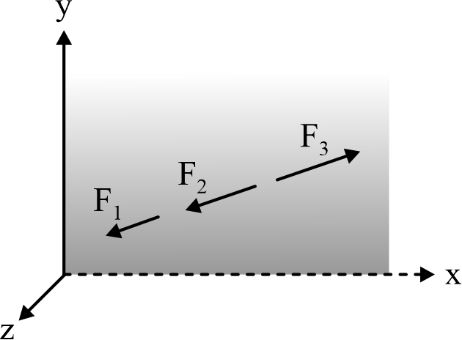
-
Concurrent
Coplanar System of Forces: -
All the forces of this force system are coplanar and the line of action of all the forces intersect at a point. Example:
Forces system at the joint of the truss, Force system on hanging picture on a wall, etc.
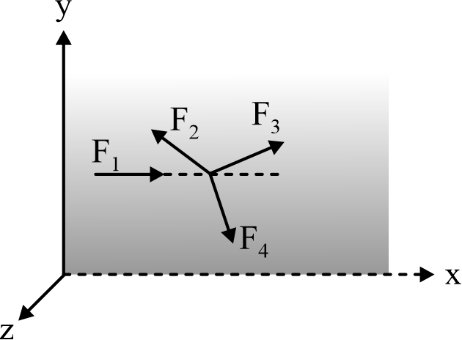
-
Parallel
Coplanar System of Forces: -
All the forces of this force system are coplanar and the line of action of all the forces are parallel to each other. Example: Forces system on lifting a weight with a pulley system, system on a balanced plank at a pivot, etc.
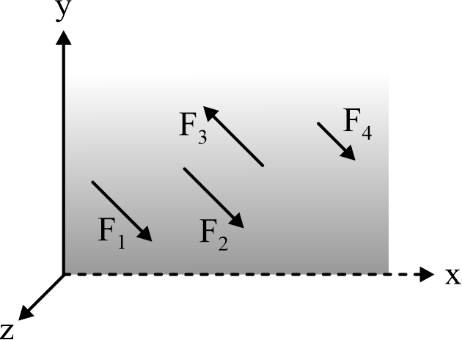 Parallel systems of force may be further classified into two types: "Like parallel force system" and "Unlike parallel force system". In a parallel force system, when all forces have the same direction, it is referred to as a like parallel force system. On the other hand, if the forces have different directions, it is termed as an unlike parallel force system.
Parallel systems of force may be further classified into two types: "Like parallel force system" and "Unlike parallel force system". In a parallel force system, when all forces have the same direction, it is referred to as a like parallel force system. On the other hand, if the forces have different directions, it is termed as an unlike parallel force system.
-
Non-Parallel Non-Concurrent
Coplanar System of Forces: -
All the forces of this force system are coplanar and the line of action of all the forces are neither parallel nor concurrent. Example:
Forces system on a truss structure, Force system on a balanced box on an inclined plane, Force system Leaning ladder against a wall etc.
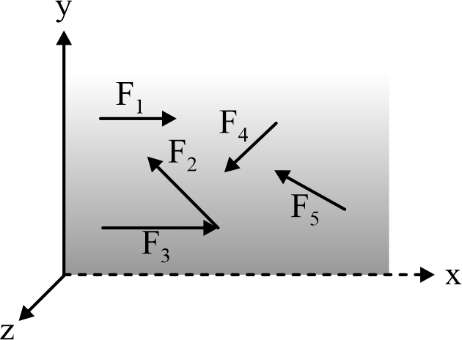
Non-Coplanar System of Forces
When we use the term "non-coplanar," it means that the quantities involved should not be in the same plane. A system of forces is called a non-coplanar system of forces if the line of action of all the forces acting on the body does not lie in the same plane. Non-coplanar systems of forces are not typically included in the syllabus of competitive exams. Therefore, we won't be covering the analysis of non-coplanar force systems in detail. Let's examine some practical examples.
Example: Forces in the members of transmission tower, Forces in the crane lifting a load using multiple cables, etc.
-
Concurrent
Non- Coplanar System of Forces: -
Concurrent non-coplanar forces have lines of action intersecting at a single point but lie in different planes. The resultant force can be found by adding the forces using vector addition. Examples include forces acting on a three-dimensional structure or a hanging chain.
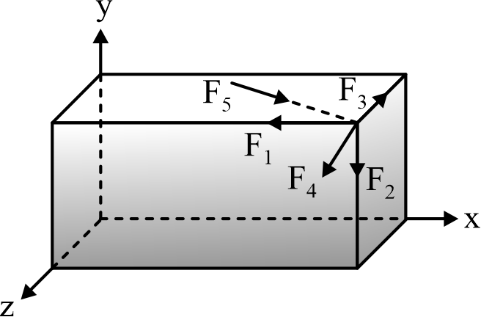
-
Parallel
Non- Coplanar System of Forces: -
A parallel non-coplanar system of forces refers to a situation where multiple forces are parallel to each other but lie in different planes.
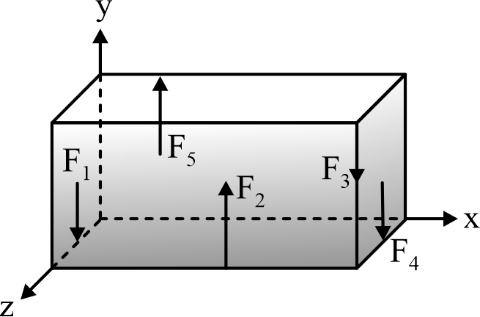
-
Non-Parallel Non-Concurrent
Non-Coplanar System of Forces:
Non-concurrent non-parallel non-coplanar forces have lines of action that neither lie in the same plane nor intersect at a single point. The resultant force is determined using vector addition. Examples include forces acting on a three-dimensional truss or a suspended bridge.











